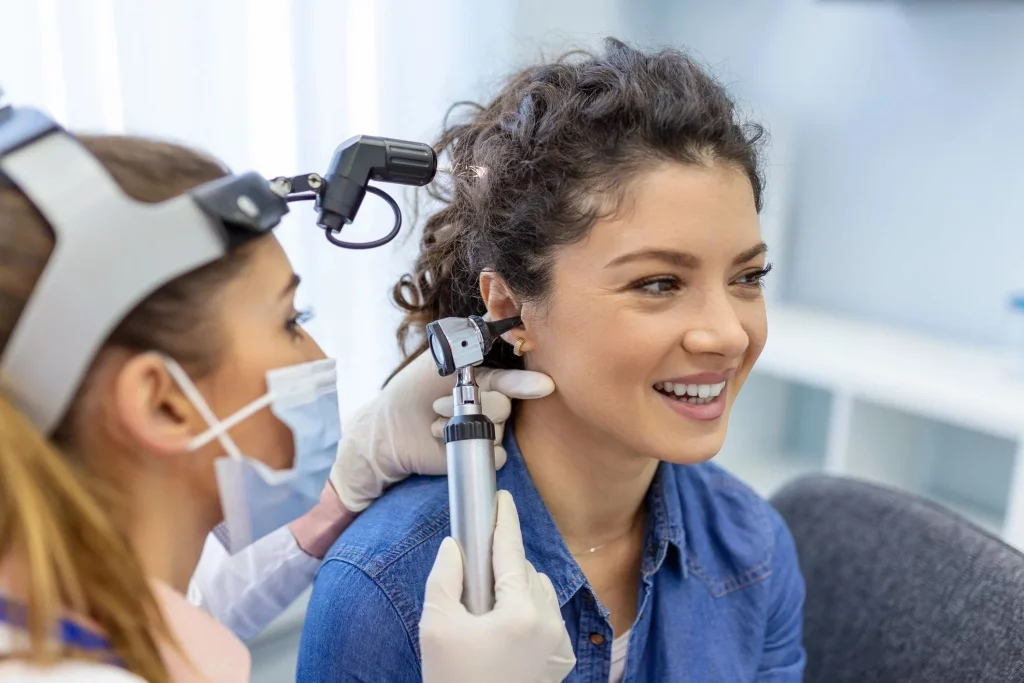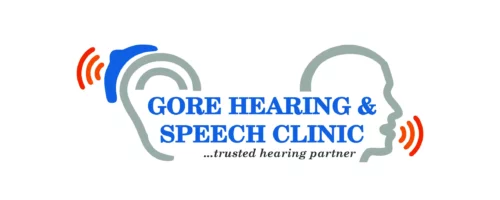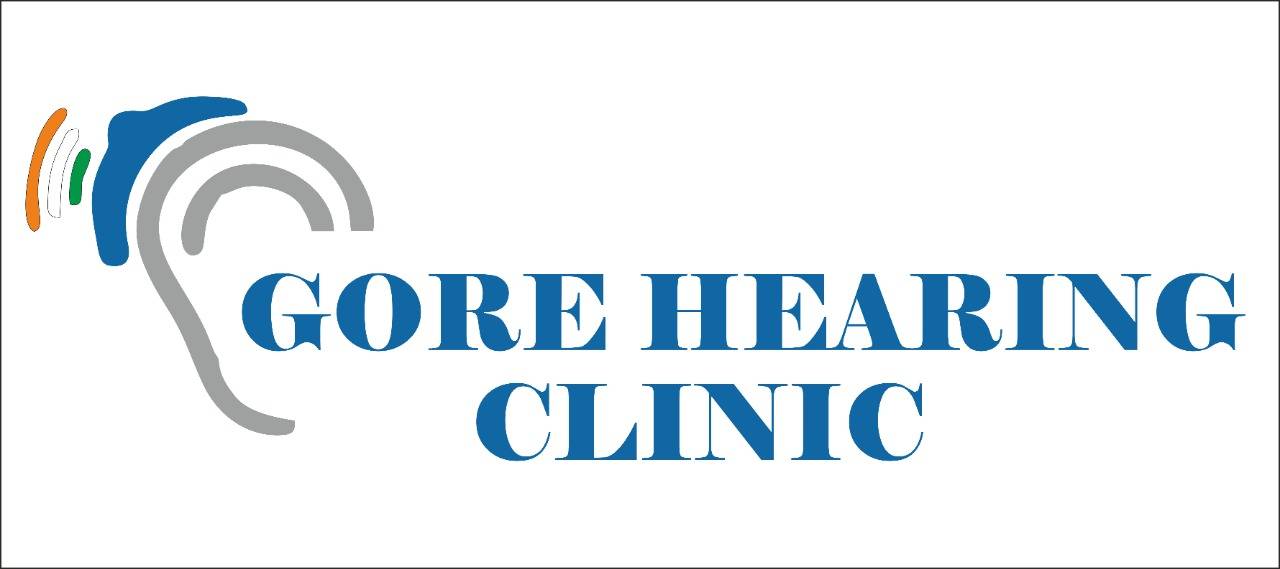Hearing is a vital sense that connects us to the world around us. Whether it’s the sound of a loved one’s voice or the melody of our favorite song, our ability to hear enriches our lives in countless ways. However, sometimes we may encounter difficulties or uncertainties when it comes to our hearing. That’s where hearing tests come into play. In this blog, we will explore the various types of hearing tests available for both adults and children, shedding light on the different methods used to evaluate and diagnose hearing-related concerns. Let’s embark on a journey of discovery and understanding, uncovering the diverse range of assessments that can help us better comprehend and address our auditory health.
What do hearing tests do?
Hearing tests evaluate your hearing capacity. Your eardrum vibrates normally when sound waves enter your ear. The waves are accelerated by the vibration as they go farther into the ear, where they are picked up by nerve cells, which then communicate then sound information to the brain. The noises you hear are created using this information.
When there is an issue with one or more ear components, ear nerves, or the area of the brain that regulates hearing that could result in hearing loss. There are three main categories of hearing loss:
- Nerve deafness, also known as sensorineural: An issue with the ear’s structure or the nerves that regulate hearing is what causes this kind of hearing loss. It could appear early in life or at any time after birth. Permanent sensorineural hearing loss is typical. Between mild (the inability to hear specific sounds) and profound (the inability to hear any noises), this type of hearing loss can occur.
- Conductive: Sound transmission into the ear is blocked, which results in this kind of hearing loss. It can happen to anyone at any age, but it most frequently affects babies and young children and is frequently brought on by ear infections or fluid in the ears. Typically, conductive hearing loss is modest, transient, and curable.
- The conductive and sensorineural hearing loss combined into one condition known as mixed: Aging persons frequently experience hearing loss. A third of persons over 65 have some form of hearing loss, most frequently of the sensorineural variety. When hearing loss is identified, there are actions you can take to control or treat the issue.
Other names for hearing tests are Sound test, audiometry, Audiography, and audiogram.
Why should I have my hearing tested?
If you show signs of hearing loss, you could require a hearing test. These comprise:
- Difficulty understanding others’ speech, especially in a noisy environment.
- The necessity of asking others to repeat themselves.
- Difficulty hearing loud noises
- Requiring the TV or music player to be turned up louder.
- The ringing or vibration in your ears.
How does a hearing test work?
A primary care physician or one of the following professionals may conduct your hearing test:
A healthcare professional known as an audiologist focuses on identifying, managing, and treating hearing loss. An otolaryngologist (ENT), a medical professional with expertise in the diagnosis and treatment of disorders of the nose, throat, and ears will examine your ear and then explain to you the possible outcomes of those tests.
Types of Hearing Tests for Adults

There are various hearing tests available. Most tests measure how you react to words or tones spoken at various pitches, loudness, and noise levels. They are known as sound tests. Typical sound evaluations include:
Acoustic Reflex Measures (ARM)
Acoustic Refles Measures also known as middle ear muscle reflex (MEMR), measure how well the ear reacts to loud noises. When you hear loud noises, a little muscle inside your ear tightens.
- The audiologist or other healthcare professional will insert a gentle rubber tip into the ear.
- The tips will be used to transmit a stream of loud noises that will be captured by a device.
- The device will indicate whether or not the sound caused a reflex.
- If hearing loss is severe, a sound may have to be extremely loud or fail to elicit a reflex at all.
Pure tone test
Audiometry is sometimes referred to as the pure-tone test. Throughout this test:
- You’ll put on headphones.
- Your headphones will receive a sequence of tones.
- During the test, the audiologist or other provider will alter the tones’ pitch and volume at various intervals. The tones may occasionally be barely noticeable.
- Every time you hear the tones, the provider will prompt you to answer. You might respond by raising your hand or pressing a button.
- Finding the tones you can hear at various pitches is one goal of the test.
Fork tests for tuning
A tuning fork is a two-pronged metal instrument that vibrates to produce a tone. Before the test:
- The tuning fork will be positioned behind or on top of your head by the audiologist or other healthcare professional.
- The server will strike the fork to produce a tone.
- When you hear the tone at various volumes or if you hear it equally in your left and right ears, you must inform the provider.
- The test can reveal whether there is hearing loss in one or both ears depending on where the fork is put and how you react. Additionally, it might reveal whether you have sensorineural or conductive hearing loss.
Tests for word and speech recognition
These might reveal how well you can understand spoken language. Before the test:
- You’ll put on headphones.
- Through your headphones, the audiologist will speak to you and ask you to repeat a series of short phrases that are spoken at various volumes.
- The service provider will record your voice as softly as possible.
- Tympanometry is a different kind of type test that evaluates how well your eardrum moves.
Tympanometry tests involve
- A tiny device will be inserted into the ear canal by the audiologist or other medical professional.
- Air will be forced into the ear by the device, causing the eardrum to oscillate.
- The movement is captured by a machine on graphs known as a tympanogram.
- The test assists in determining the presence of an ear infection or other issues such as fluid or wax buildup, an eardrum hole, or a tear.
What do the findings mean?
Your results can reveal if you have sensorineural or conductive hearing loss.
If you are determined to have sensorineural hearing loss, your tests may reveal that the hearing loss is:
Mild: You can’t hear some noises, such as ones that are too high or low.
Moderate: In a busy setting, it is difficult to hear most sounds, including conversation.
Severe: You are unable to hear the majority of sounds.
Profound: No sounds can be heard.
Depending on how severe it is, sensorineural hearing loss will need to be managed and treated.
Depending on the source of your conductive hearing loss, your healthcare professional may advise either medication or surgery for you.
Why is a hearing test for my child necessary?

For the majority of infants and children, routine hearing examinations are advised. Before they leave the hospital, newborns typically have their hearing tested. If your infant fails this hearing test, it may not always indicate severe hearing loss. But within three months, your kid needs to undergo another test.
At routine health visits, the majority of youngsters should have their hearing evaluated.
During these examinations, the ear may be physically examined to look for extra wax, fluid, or infection symptoms. At ages 4, 5, 6, 8, and 10, the American Academy of Paediatrics advises more complete hearing exams. If your child exhibits signs of hearing loss, tests should be performed more frequently.
Signs of hearing loss
- When exposed to loud noises, not stumbling or getting startled.
- 3 months old and not responding to a parent’s voice.
- By the age of six months, not turning their eyes or heads toward a sound
- Not copying sounds at the age of 12 months or uttering a few simple words.
When a toddler has hearing loss, among the symptoms are
- Speech that is slurred or difficult to comprehend. By the age of 15 months, the majority of young children can speak a few words, such as “mama” or “dada.”
- Refusing to answer when addressed by name.
- Not being present
Types of Hearing Tests for Children
1. Test of the auditory brain (ABR)
This examines hearing loss that is sensorineural. It gauges the way the brain reacts to sound. Infants, particularly newborns, are tested with it most frequently. As part of this test:
- On the scalp and behind each ear, the audiologist or other healthcare professional will apply electrodes.
- Computer hardware is attached to the electrodes.
- There will be tiny earphones inserted.
- Tones and clicks will be transmitted to the earbuds.
- The electrodes gauge how the brain reacts to noises, and the computer will show the results.
2. Otoacoustic emissions test (OAE)
Infants and young children are subjected to this test. During the test:
- A tiny probe that resembles an earphone will be inserted into the ear canal by the audiologist or other healthcare professional.
- The probe will deliver sound.
- The reaction of the inner ear to the noises is recorded and measured by the probe.
- The test can detect hearing loss, but it cannot distinguish between sensorineural and conductive hearing loss.
Do I need to know anything else about hearing tests?
Understanding typical speech might be difficult, even with mild hearing loss. Many senior citizens will avoid social events as a result, which can induce loneliness and despair. Preventing these issues can be achieved by treating hearing loss. There are techniques to control hearing loss in older persons, even though it is typically a permanent problem. Options for treatment include:
Hearing devices: An instrument worn behind or inside the ear is called a hearing aid. Sound is amplified (made louder) with a hearing aid. Some hearing aids offer more sophisticated features. Your audiologist can advise you on the best course of action.
Cochlear implantation: A surgical procedure is required to implant this gadget in the ear. People with more severe hearing loss who don’t gain much from wearing hearing aids typically utilize them. The hearing nerve receives sound directly from cochlear implants.
Surgery: Surgery can be used to treat some types of hearing loss. These comprise issues in the ear’s small bones or the eardrum.
Conclusion
Consult with medical professionals who can assist you and your child in communicating. These might be speech therapists or other professionals who instruct people in lip reading, sign language, or other linguistic techniques and attend support groups to help communicate.
Audiologist and otolaryngologist (ear, nose, and throat doctor) appointments should be scheduled on a regular basis.

